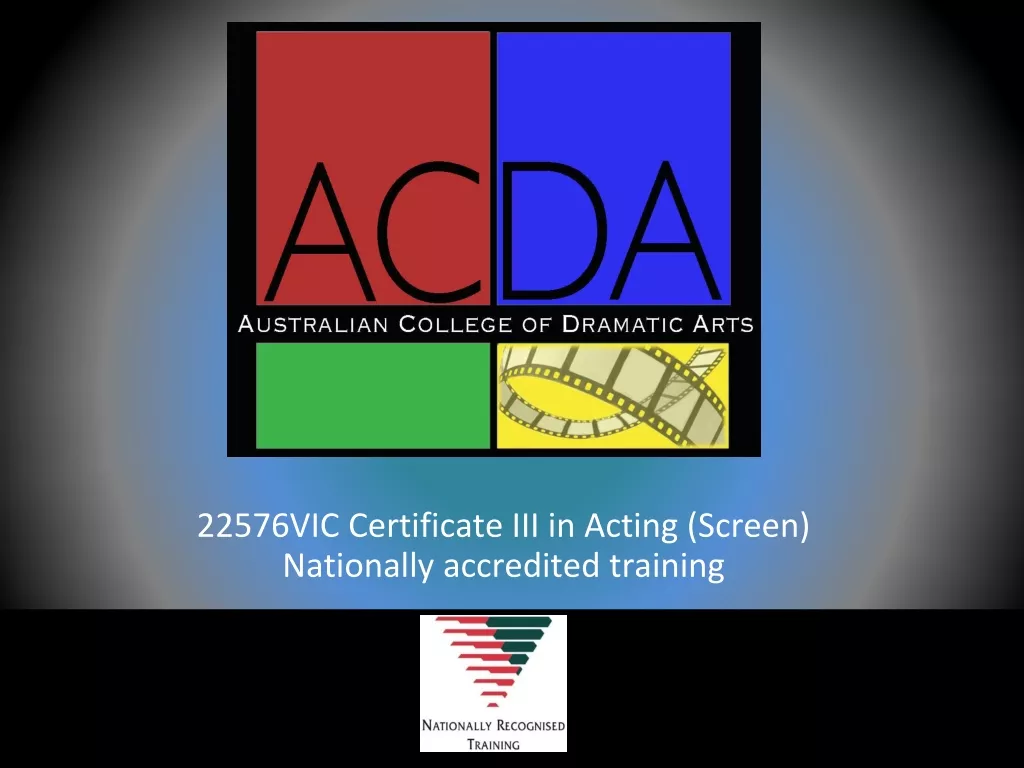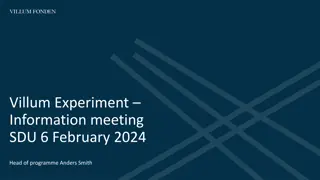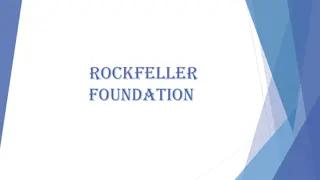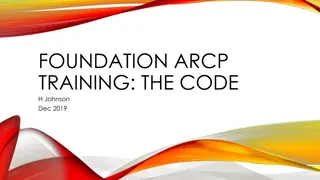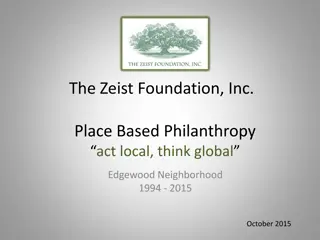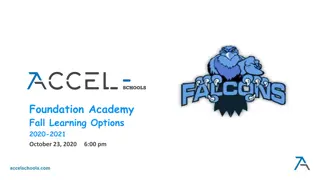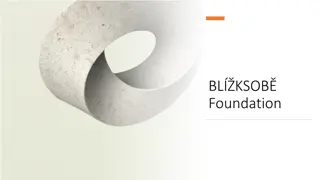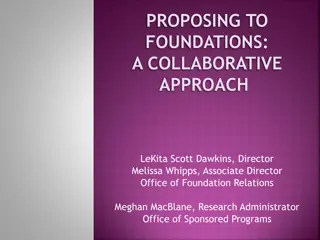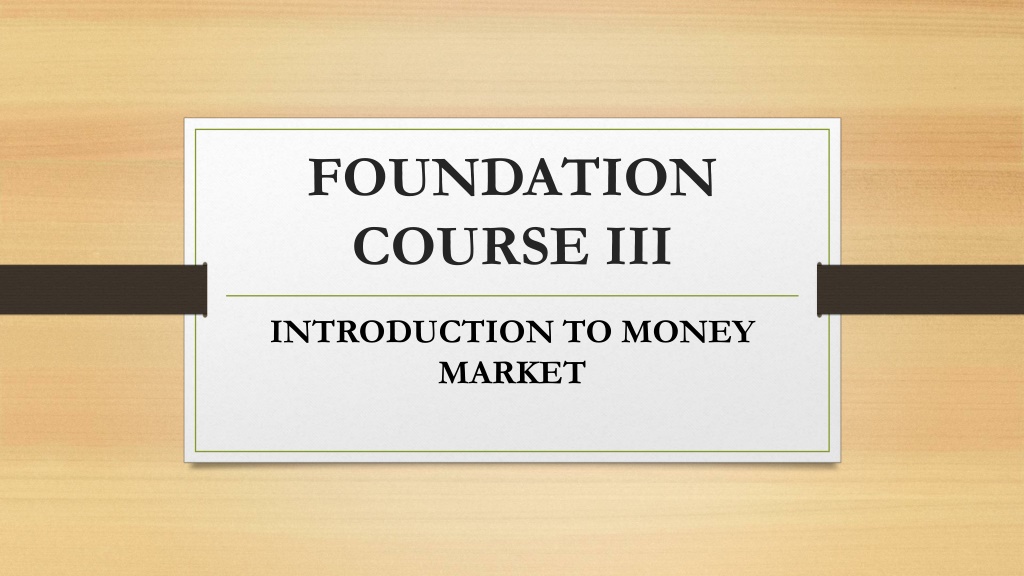
Introduction to Money Market and Financial Instruments
Explore the world of money market and financial instruments with details on capital market, RBI loans, certificates of deposit, commercial paper, government securities, and more. Learn about the various investment options available and how different entities participate in the money market. Understand the key concepts and instruments used in this financial realm.
Download Presentation

Please find below an Image/Link to download the presentation.
The content on the website is provided AS IS for your information and personal use only. It may not be sold, licensed, or shared on other websites without obtaining consent from the author. If you encounter any issues during the download, it is possible that the publisher has removed the file from their server.
You are allowed to download the files provided on this website for personal or commercial use, subject to the condition that they are used lawfully. All files are the property of their respective owners.
The content on the website is provided AS IS for your information and personal use only. It may not be sold, licensed, or shared on other websites without obtaining consent from the author.
E N D
Presentation Transcript
FOUNDATION COURSE III INTRODUCTION TO MONEY MARKET
FINANCIAL MARKETS CAPITAL MARKET 1.Long Term 2.More than year 3.SEBI MONEY MARKET 1.Short Term 2.Max. 364 days/ 1 year. 3.RBI WHO INVESTS WHERE? DEPENDS ON NEED, WANT & DESIRE
INSTRUMENTS OF BANKS RBI GIVES LOAN 1. Repo Rate 4% ------ MAX 90 DAYS 2. Bank rate- 4.25% ----- 90+ DAYS 3. MSF 4.25% ------ 1 DAY / OVERNIGHT (Marginal Standing Facility) BANK TO BANK 1. Call Money ---- one day 2. Notice money ---- 2-14 days 3. Teams money ---- 15 days PUBLIC TO BANK 1. Banks issue a CD as a Security to the Public
CERTIFICATE OF DEPOSIT (CD) 1. INTRODUCED IN 1989 2. ISSUED BY BANKS & FINANCIAL INSTITUTIONS 3. MINIMUM AMOUNT MIN - 1LAKH (MULTIPLE OF 1 LAKH) 4. MATURITY BANK MIN- 7DAYS MAX 364DAYS - FI MIN 1 YR MAX 3YRS 5. ISSUED ON DISCOUNT TO THE FACE VALUE
CORPORATE / COMPANIES / INDUSTRIES DEAL IN MONEY MARKET COMMERCIAL PAPER - ISSUED BY CORPORATE / COMPANIES / INDUSTRIES - DEALING IS DONE BY A COMMERCIAL BANK - INTRODUCED IN THE YEAR 1990 - NET WORTH MORE THAN 5 CR - MATURITY IS MIN- 7 DAYS, MAX 364 DAYS - MINIMUM AMOUNT 5 LAKH (MULTIPLE) - ISSUED ON DISCOUNT TO THE FACE VALUE
GOI USES MONEY MARKET LONG TERM SHORT TERM INDIVIDUAL CAN DIRECTLY INVEST KVP KISAN VIKAS PATRA NSC NATIONAL SAVING CERTIFICATE TREASURY BILL CMB CASH MANAGEMENT BILL
INSTRUMENTS OF GOI RBI 1. WAYS & MEANS ADVANCES (WMA) GOI RBI 90 DAYS INTEREST = REPO RATE 2.OVERDRAFT 10 DAYS ( AFTER 90 DAYS) INTEREST = 2% + REPO RATE IF IT EXCEEDS MORE THAN 10 THAN 5% + REPO RATE
GOI PUBLIC TREASURY BILL (Tbill) 1. ISSUED BY GOI 2. DEALING DONE BY RBI 3. INTRODUCED IN THE YEAR 1917 4. MIN AMOUNT 25 THOUSAND (MULTIPLE OF 25K) 5. MATURITY 91 DAYS 182 DAYS 364 DAYS
GOI PUBLIC CASH MANAGEMENT BILL (CMB) 1. ISSUED BY GOI 2. DEALING DONE BY RBI 3. MIN AMOUNT 25 THOUSAND (MULTIPLE OF 25K) 4. MATURITY LESS THAN 91 DAYS
PRIMARY DEALER IN MONEY MARKET
INTRODUCTION Primary dealers are registered entities with the RBI who have the license to purchase and sell government securities. They are entities who buys government securities directly from the RBI (the RBI issues government securities on behalf of the government), aiming to resell them to other buyers. In this way, the Primary Dealers create a market for government securities.
The Primary Dealers system in the government securities market was introduced by the RBI in 1995. The PDs are thus created to promote transactions in government securities market. A facilitating arrangement is essential for selling of government securities as government is the single largest borrower in the market who borrows through the issue of its securities treasury bills and bonds.
Eligibility Conditions for PDs a. Subsidiary of scheduled commercial bank/s and All India Financial Institutions b. Subsidiaries/ joint ventures set up in India by entities incorporated abroad. c. Company incorporated under the Companies Act, 1956 and does not fall under (a) or (b). The applicant for PD should register as an NBFC for at least one year prior to the submission of application. Other conditions like net owned fund etc are mentioned by the RBI.
TYPES OF CAPITAL MARKET PRIMARY MARKET SECONDARY MARKET - Second hand purchase - First hand purchase
SEBI - - - - - - - - - - EST 1988 IT BECAME STATUTORY BODY 1992 SEBI ACT WAS PASSED IN 1992 SEBI HEADQUARTER IS IN MUMBAI SEBI CHAIRMAN AJAY TYAGI TOTAL BOARD MEMBER 09 1 CHAIRMAN 1 RBI S DEPUTY GOVERNOR T Rabi Shankar 2 FINANACE MINISTRY 5 MEMBER APPOINTED BY GOI
TYPES OF CAPITAL MARKET EQUITY DERIVATIVE DEBT
EQUITY 1. SHARE - EQUITY - PREFERANCE 2. IPO INITIAL PUBLIC OFFERING UNLISTED COMPANY ISSUES SHARES FOR THE FIRST TIME.
DEBT BONDS A bond is a fixed income instrument that represents a loan made by an investor to a borrower (typically corporate or governmental)
TYPES OF BONDS ON THE BASIS OF ISSUER: 1. GOVERNMENT BOND LOWER RISK LOWER COUPON VALUE 2. CORPORATE BOND HIGHER RISK HIGHER COUPON VALUE
TYPES OF BONDS ON THE BASIS OF PRIORITY 1. UNSUBORDINATED OR SENIOR BOND PROFIT FIRST IN CASE COMPANY GOES INTO LIQUIDATION 2. SUBORDIANATED BOND PAID AFTER THE UNSUBORDINATED BOND HOLDER
TYPES OF BONDS ON THE BASIS OF COUPON RATE: 1. FIXED INCOME COUPON BOND COUPON RATE IS ALWAYS FIXED 2. FLOATER BOND INTEREST RATE VARIES RATE CHANGES IN LINE WITH THE BENCHMARK OF MIBOR (MUMBAI INTER BANK OFFERED RATE)
TYPES OF BONDS ON THE BASIS OF COUPON RATE: 1. INVERSE FLOATER BOND RATE CHANGES IN THE OPPOSITE DIRECTION OF MIBOR 2. ZERO COUPON BOND DISCOUNT ISSUED ON THE FACE VALUE.
TYPES OF BONDS ON THE BASIS OF REDEMPTION 1. CALLABLE BOND BOND ISSUER HAS THE RIGHT TO END CONTRACT BEFORE THE DATE 2. PUTTABLE BOND BOND HOLDER HAS THE RIGHT TO END CONTRACT BEFORE THE DATE
DEBENTURES Debentures are some of the debt instruments which can be used by government, companies, organization for the purpose of issuing the loan. Based on the reputation of the corporates loan is issued on fixed ROI (Rate of Interest). When companies need financial support they borrow the money for expansion or anything they need for at a fixed rate of interest.
It is an instrument that is used to raise long term debt capital. They are common securities issued under borrowed funds. Debenture Holders are called creditors of the company. Denture is issued by the company as an acknowledgement of its Debt. Holder of an Debenture is called as a Debenture Holder
DERIVATIVES A DERIVATIVE IS FINANCIAL CONTRACT WHOSE VALUE IS DERIVED BY UNDERLYING ASSET.
TYPES OF DERIVATIVES FORWARD FUTURE SWAP OPTION
FIMMDA FIMMDA stands for Fixed Income Money Market Derivatives Association of India. It is a voluntary body controlling the Money Market, Bond Market & Derivative Markets. It was established on 4th May 1998. It is incorporated under the Companies Act 1956.
MEMBERS OF FIMMDA IT IS AN ASSOCIATION OF COMMERCIAL BANKS & FINANCIAL INSTITUTIONS Has a total of 150 member MEMBERS OF FIMMDA 12 members from Public sector banks 23 members from Private banks 34 members from Foreign Banks 7 members representing Primary Dealers 6 members representing Financial Institutions 15 members representing Insurance Companies
ROLE OF FIMMDA Functions as a primary interface with regulators such RBI, SEBI, Ministry Of Finance, International Monetary Fund & World Bank on various issues impacting the functions of these markets. To device standardize best market practices. To undertake developmental activities. To standardize introduction of new products and practices To provide training and support to dealers and members. To function as an arbitrator for disputes, in any among the members. To develop standardized set of documentation.
SCOPE & BIFURCATIONS OF FIMMDA MONEY MARKET FIXED INCOME / BOND MARKET DERIVATIVES
FIXED INCOME / BOND MARKET Bond market is where investor trade debt securities prominently bonds which are issued by corporations or government. Bond market is also known as credit market or Debt market. The Bond Market provides investors a steady source of regular income.
MONEY MARKET It is a short term Debt instrument with max maturity period of 1 year. It is regulated by RBI. Instruments of money market include CD, CP, T-Bills etc Money Market instruments are issued at discount on their face value.
DERIVATIVE MARKET Derivative Market refers to the financial market for financial instruments such as an underlying asset and financial derivatives. Their value comes from the fluctuations of values of the underlying asset. There are 4 types of derivative contracts : Option, Forward, Future & Swap.
MUTUAL FUNDS A MUTUAL FUND IS A PROFESSIONALLY MANAGED TYPE OF COLLECTIVE SCHEMES THAT POOLS MONEY FROM THE INVESTORS AND INVESTS IT SHARE, BOND, DEBENTURES AND MONEY MARKET. MUTUAL FUNDS IN INDIA ARE NOT PERMITTED TO BORROW TO INVEST IN A PORTFOLIO WORKS UNDER SEBI UTI (UNIT TRUST OF INDIA) STARTED MUTUAL FUND IN 1964 SBI WAS THE FIRST BANK TO START MUTUAL FUNDS
TYPES OF MUTUAL FUNDS BY NATURE 1. EQUITY FUND, 2. DEBT FUND, 3. HYBRID FUND BY STRUCTURE 1. CLOSE ENDED FUND, 2. OPEN ENDED, 3. INTERVAL FUND BY OBJECTIVE 1. GROWTH ORIENTED FUNDS, 2. DIVIDEND FUNDS
ADVANTAGES LIQUIDITY & FLEXIBILITY DIVERSIFICATION MINIMAL INVESTMENT REQUIREMENT MANAGED BY PROFESSIONALS HIGHER RATES OF INTEREST SAFETY
DISADVANTAGES HIGH COST FLUCTUATING RETURNS DOES NOT CUSTOMIZED OVER DIVERSIFICATION OF PORTFOLIO
MONETARY POLICY Framed by RBI Monetary policy committee frames Monetary Policy Every 2 month the changes are made in Monetary Policy. (Total 6 times in a year) Monetary policy committee member: 3 members of GOI, 3 members RBI Meetings of the members are held at least 4 times a year Established in the year 2016. Under the recommendation of Urjit Patel Committee
OBJECTIVE OF MONETARY POLICY GROWTH / DEVELOPMENT FINANCIAL STABILITY S P D Inflation can be defined as a persistent rise in the general price of goods and services of common or daily use such as clothing, food, fuel, transport, etc which results in an increase in the cost of living. In economics, deflation is a decrease in the general price level of goods and services.
INSTRUMENTS OF MONETARY POLICY INDIRECT INSTRUMENT DIRECT INSTRUMENT REFINANCE FACILITY CRR - 4% SLR 18.25% REPO RATE (4%) (max 90 days) (repurchase offer rate) BANK RATE MARGINAL STANDING FACILITY REVERSE REPO RATE
CRR CASH RESERVE RATIO THE SHARE (4%) OF NET DEMAND TIME LIABILTY (NDTL) THAT BANK MUST MAINTAIN WITH RBI IS CALLED AS CRR. IT IS MAINTAINED ON A DAILY BASIS MAINTAINED UNDER THE RBI ACT OF 1934 SEC 42 BANK LIABILITY ASSESTS DEPOSIT DEMAND DEPOSIT TIME DEPOSIT CURRENT SAVING RECURRING DEPOSIT FIX DEPOSIT
SLR STATUTORY LIQUIDITY RATIO THE SHARE (18.25 %) OF NET DEMAND & TIME LIABILITY THAT BANK MAINTAINS IN CASH, GOLD & GOVERNMENT SECURITIES. SLR IS MAINTAINED ON A DAILY BASIS SLR IS CALCULATED ON NDTL SLR IS MAINTAINED WITH THE BANK ITSELF SLR MAINTAINS IN CASH, GOLD & GOVERNMENT SECURITIES. BANK MAINTAINS SLR UNDER THE BANKING REGULATION ACT 1949, SEC 24
REPO RATE 4% Also known as Repo Option, Repurchase Option, Repurchase Agreement, Repurchase Offer Rate. RBI offers the loan at repo rate for 15 days & extension of another 75 days. Thus a repo rate is offered for the max of 90 days. Min amount given is 5 cr Max amount given is - 0.5 % of NDTL
BANK RATE 4.25% RBI offers loan to the Bank for an extension of more than 90 days. Bank Rate is actually a penalty rate.
MARGINAL STANDING FACILITY (MSF) 4% It was introduced in the year 2011. It was started under the recommendation of Mr. G. Mahalingam RBI offers a loan to the bank only for a day or overnight. Min amount offered 1 cr Max amount offered 1 % of NDTL Amount is only given between 3.30 pm 4.30 pm. MSF is not given if the next day is holiday. RRB & CB are not given loan on MSF In order to obtain loan from RBI under MSF, a bank must have a Subsidiary General Ledger Account (SGL) A type of Demat Account where bank deposits their security in an electronic form
REVERSE REPO RATE 3.35 % It is a rate at which bank deposits its excess money with the RBI.
Liquidity Adjustment Facility (LAF) It is a combined operation of Repo Rate & Reverse Repo Rate to control Inflation & Deflation. When the money supply in the market increases, RBI increases Repo Rate, thus banks also increases their interest rate, Thus Inflation is controlled because loans become expensive & money supply can be controlled. When the money supply decreases in the market, RBI decreases the Repo Rate, thus also decreases their interest rate, Thus Deflation is controlled because loans are cheaper & money supply can be increased in the market.






